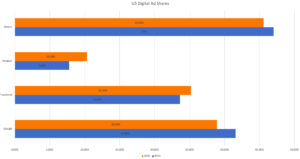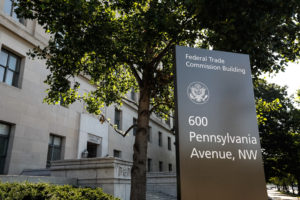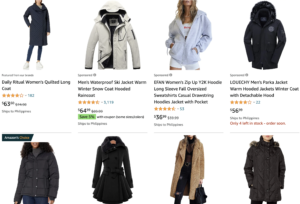
While Amazon third-party sellers are concerned about rising ad prices, a coalition of labor unions is concerned that these ads are deceiving consumers. A complaint was recently filed, alleging that the company is violating FTC rules with how they run their ads. The trade union is also saying that these moves by Amazon are “probably deliberate.”
How Does Amazon Allegedly Deceive Customers Using Ads?
The Strategic Organizing Center (SOC), in a complaint filed last December 8, made allegations based on the analysis of more than 130,000 search results on both desktop and mobile devices. Data were gathered from August 30 to November 11, 2021.
The problem, according to the SOC, can be summarized as follows: the ads fail to clearly and conspicuously disclose which of the results are organic and which are sponsored. They cite a couple of reasons why Amazon’s ads are “deceptive”:
- The loading of ad labels is delayed for several seconds (which the complaint referred to as “lazy load”);
- The label “Sponsored” used by Amazon does not comply with FTC’s guidelines, i.e., it “greatly reduced the clarity and explicitness” of this label in some ads;
- These ads constituted an “overwhelming portion of Amazon’s search pages”;
- None of the ads were distinguished by prominent shading;
- Only 1% had prominent borders;
- About 61% lacked a large and visible label
SOC says that none of Amazon’s sponsored ads on its search results followed all of FTC’s guidelines. The coalition also requests in the same complaint for FTC to investigate the matter and to take “swift and forceful action to halt these consumer abuses.”
The complaint explained in detail how Amazon is allegedly deceiving customers with how they present listings on their search results page. They delved into font color and size, and how the word “Sponsored” is less noticeable compared to titles like “Highly Rated” and “Today’s Deals.”
There are, however, some differences between mobile and desktop SERPs according to SOC’s analysis:
- The “Sponsored” label is prominently displayed on mobile devices but not on desktops;
- In terms of proper positioning of Top Banner Ads, none of the desktop SERPs are compliant while only 59% on mobile are found to be non-compliant;
Furthermore, the SOC found that around 28% of the results were third-party ads and about half of the top results are sponsored. This increased number of sponsored ads was also reported last September by CNBC.
What Does Amazon Say to These Allegations?
The complaint calls into question the integrity of all of Amazon’s search results. And because the “violations are so blatant and pervasive,” SOC believes that Amazon probably does this deliberately.
As expected, Amazon belies these allegations, saying the report made by SOC is “incorrect” and that the “Sponsored” label is prominently displayed, in accordance with FTC guidelines.
So are they compliant?
Below is a screenshot of the first page of the search results for the keyword “coats” on amazon.com accessed using a laptop. You can observe that the “Sponsored” label has a smaller and lighter font compared to other texts and the Amazon’s Choice badge is much more prominent compared to it.
But whether or not the placement and prominence of the label are enough to make it FTC compliant, we have yet to see.
Amazon’s Other Ad-Related Problems
This isn’t the first time Amazon is accused of running deceptive ads. Back in 2017, Which? tracked items that were advertised as discounted but were actually cheaper or are the same price the rest of the year. The organization has then warned consumers to look at deals more closely and check to see if the prices really are lower.
In 2018, some Amazon ads were banned for being misleading in terms of the listed potential savings. The company has admitted that one of the complained listings was due to a calculation error but that the rest were correct. In the end, however, it was decided by the advertising regulator that all of the complained ads were misleading.
What Do These Ad Problems Mean for Sellers?
The FTC complaint focuses more on how these allegedly deceptive practices potentially harm consumers. However, a specific problem pointed out in the complaint—the increasing number of sponsored ads on Amazon’s search results—directly affects third-party sellers as well.
Because of the limited real estate on page 1 and the growing number of ads being featured, sellers will feel a stronger need to spend on ads. It’s no wonder why PPC costs are up 50% in 2021. On a related note, a recent report by the Institute for Local Self-Reliance (ILSR) claims that Amazon collects over a third of sellers’ revenues, a big part of which is in ads.
In 2020, Amazon’s US digital ads share jumped from 7.8% to 10.3%, while Google’s was reduced. We expect this trend to continue in the coming years, which means paid ads will continue to get more expensive as demand rises.

As for the prominence of the “Sponsored” label, if the FTC will mandate Amazon to make it equally or more noticeable compared to other badges such as “Amazon’s Choice,” then it might make these badges less effective in attracting consumers to well-performing listings.
Final Thoughts
Ecommerce is fairly new, and so is digital advertising. Until recently, the government hasn’t been extremely attentive to issues regarding digital ads. But now, the FTC is more aware and vigilant about Big Tech and ecommerce.
How do you think the FTC will react to this complaint? Do you agree that sponsored ads on Amazon’s search results are deceptive? Tell us in the comments section below.
You can read the full text of the complaint here.





